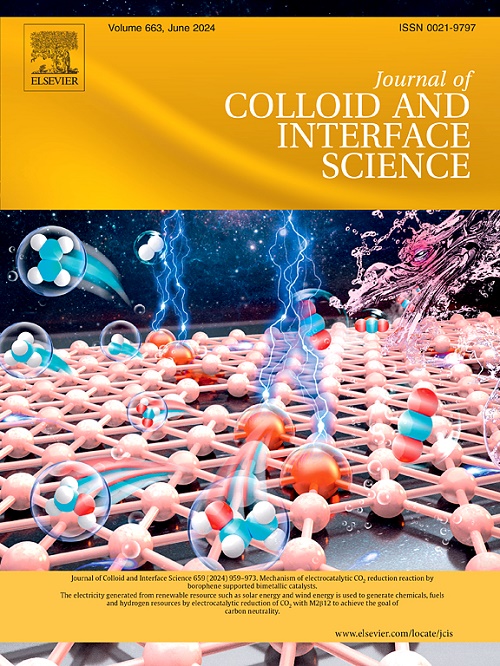通过界面保护和本体优化强化离子扩散控制富镍无钴单晶阴极微裂纹。
IF 9.4
1区 化学
Q1 CHEMISTRY, PHYSICAL
引用次数: 0
摘要
镍含量不低于90%的富镍无钴层状氧化物阴极以其优异的比容量和低廉的成本在锂离子电池领域受到广泛关注,但由于结构劣化和界面不稳定导致的严重容量退化严重阻碍了其进一步发展。本文针对上述问题,从界面到内部设计制备了sb改性LiNi0.9Mn0.1O2材料。一方面,在颗粒内部引入sb离子可以产生具有高解离能的Sb-O化学键,有助于增强颗粒的化学稳定性和结构稳定性。同时,sb离子的存在可以抑制有害的H2-H3相变,扩大层间距,从而减弱机械应力,提高离子扩散速率。另一方面,sb基材料的表面改性可以有效抑制有害的界面反应,有利于提高循环稳定性。结果表明,在高温下循环200次后,纳米- sb材料的容量保持率达到89.5%。因此,构建的双改性对于获得高性能富镍无钴锂离子电池正极材料的坚固骨架和增强界面稳定性至关重要。本文章由计算机程序翻译,如有差异,请以英文原文为准。

Reinforcing ion diffusion and controlling microcrack of nickel-rich cobalt-free single-crystalline cathodes via interfacial protection and bulk optimization
Nickel-rich cobalt-free layered oxide cathode with Ni contents no fewer than 90 % has received extensive attention in the field of lithium-ion batteries due to its excellent specific capacity and low cost, but serious capacity degeneration induced by structural deterioration and interfacial instability greatly hamper their further development. Herein, the Sb-modified LiNi0.9Mn0.1O2 materials from the interface to interior have been designed and fabricated to overcome the above issues. On the one hand, the introduction of Sb-ion in interior of grains can generate Sb-O chemical bond with high dissociation energy, which contributes to reinforce the chemical and structural stability. Meanwhile, the existence of Sb-ions can restrain the harmful H2-H3 phase transformation and expand interlayer spacing, thereof enabling to weaken the mechanical stress and enhance ion diffusion rate. On the other hand, the surficial modification resulted by the Sb-based materials can effectively suppress the noxious interfacial reaction, which is conducive to improving the cycling stability. As expected, the capacity retention rate of NM-Sb materials prepared by this optimized design in this work reached 89.5 % after 200 cycles at 1 C. Thus, the constructed double-modification is essential for obtaining robust framework and enhancing interfacial stability for high-performance nickel-rich cobalt-free lithium-ion battery cathode materials.
求助全文
通过发布文献求助,成功后即可免费获取论文全文。
去求助
来源期刊
CiteScore
16.10
自引率
7.10%
发文量
2568
审稿时长
2 months
期刊介绍:
The Journal of Colloid and Interface Science publishes original research findings on the fundamental principles of colloid and interface science, as well as innovative applications in various fields. The criteria for publication include impact, quality, novelty, and originality.
Emphasis:
The journal emphasizes fundamental scientific innovation within the following categories:
A.Colloidal Materials and Nanomaterials
B.Soft Colloidal and Self-Assembly Systems
C.Adsorption, Catalysis, and Electrochemistry
D.Interfacial Processes, Capillarity, and Wetting
E.Biomaterials and Nanomedicine
F.Energy Conversion and Storage, and Environmental Technologies

 求助内容:
求助内容: 应助结果提醒方式:
应助结果提醒方式:


